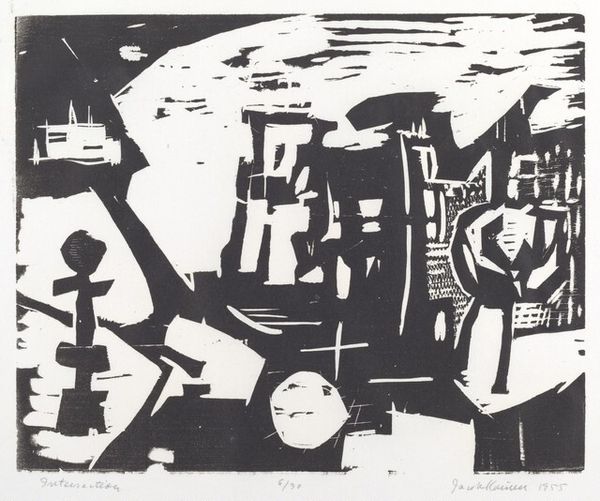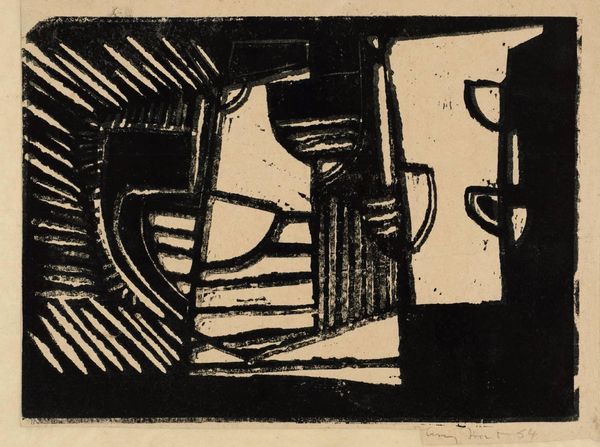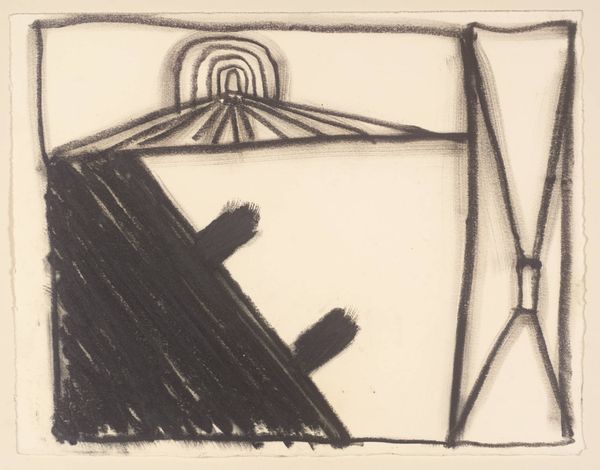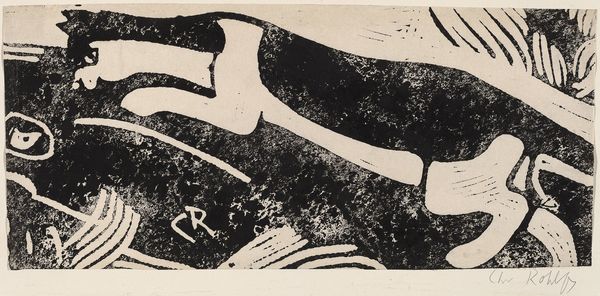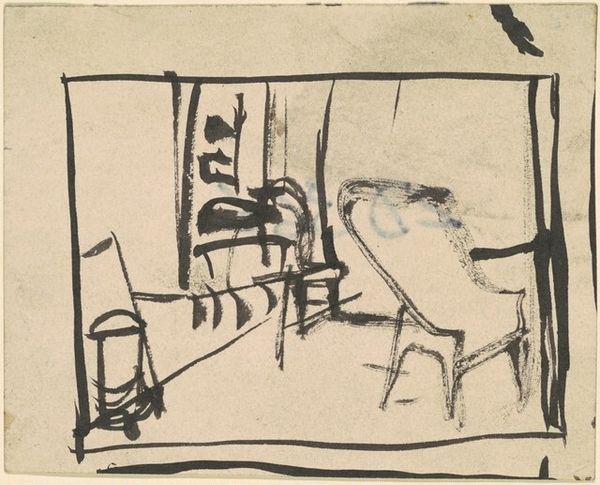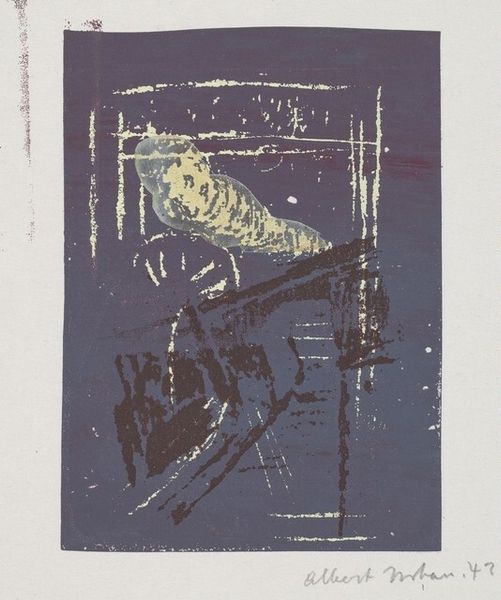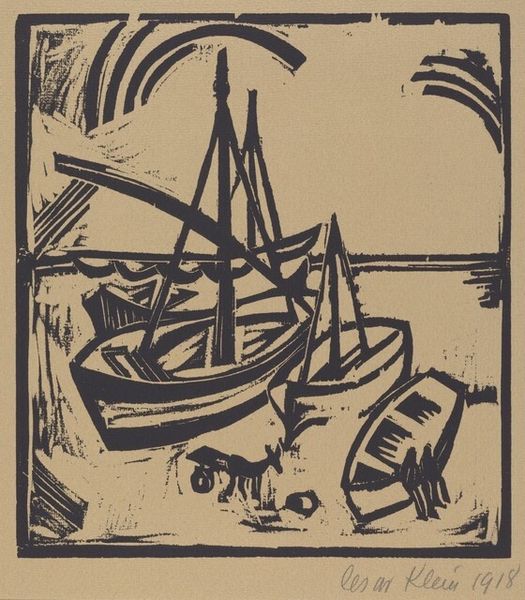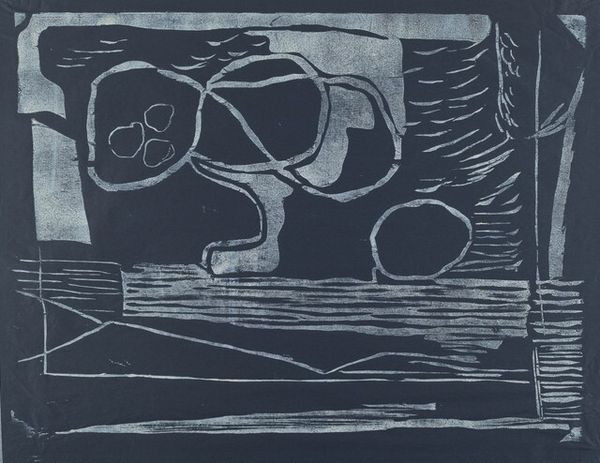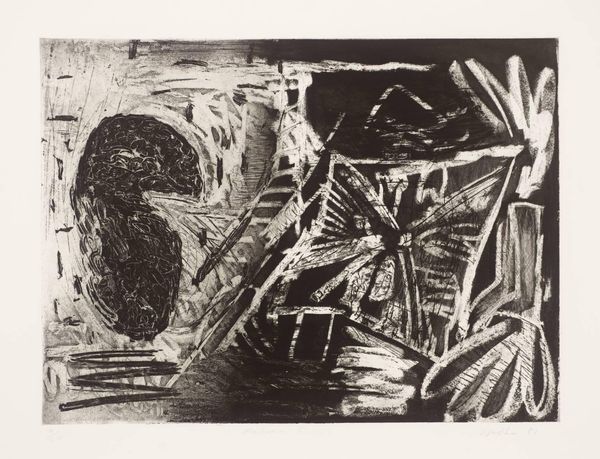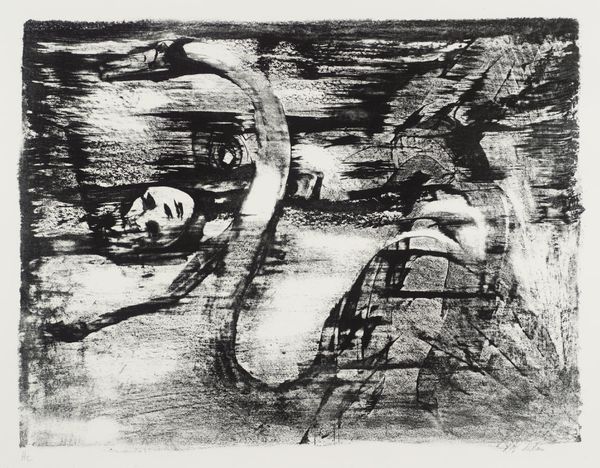
drawing, print, ink, woodcut
#
drawing
# print
#
ink
#
pen-ink sketch
#
woodcut
Dimensions: 4 1/2 x 5 7/16 in. (11.43 x 13.81 cm) (image)12 9/16 x 9 7/16 in. (31.91 x 23.97 cm) (sheet)
Copyright: No Copyright - United States
Curator: Upon entering this gallery, you encounter Wanda Gág’s “Interior,” a woodcut from 1924. Its stark blacks and whites immediately arrest the gaze. What impressions do you gather initially? Editor: It’s unsettling. The heavy shadows and austere domestic objects—that basin hanging overhead, the empty plates—it feels charged, almost ominous. The composition itself is so sharp. Curator: Precisely! Consider the economy of line, how Gág manipulates light and dark to delineate space and form. This high-contrast aesthetic heightens the image's expressive impact. Gág leverages printmaking conventions to create a visual poignancy here. Editor: Well, understanding Gág's broader context might elucidate this feeling further. She was navigating the social landscape after World War I, which saw many returning soldiers struggling and poverty was rampant. Perhaps, her woodcuts depicted scenes reflecting those socio-economic struggles? Curator: The content within is certainly up for grabs; I’d focus on form. See how the bold geometric shadows interact with the delicate curves of the chair and tableware, producing visual tension and depth? It transcends mere representation. Editor: But it doesn't exist in a vacuum! Looking at these shadows, the seemingly sparse meal laid out and an ever present hanging basin, can't help but see hints to both domestic labor and financial austerity in the 1920s, impacting everything from household duties to the daily meals that folks eat! Curator: Undeniably the image triggers those thoughts; yet, in detaching form from content, we are presented with a symbolic syntax – where lines and shapes evoke emotive possibilities not fixed in history. Consider how she transformed basic shapes of triangles, squares, and arches. The symbolic transformation that is offered up for interpretation in viewing it. Editor: The interplay of light, shadow, and everyday objects does offer up a very loaded glimpse into this home. Thanks to your deconstruction and historical understanding. It now appears to be far more evocative than ever initially gleaned. Curator: Similarly, that conversation broadens the image even more to see a multitude of aspects layered on top of what the other uncovers and considers when engaging with Wanda Gag's woodcut, "Interior."
Comments
No comments
Be the first to comment and join the conversation on the ultimate creative platform.
